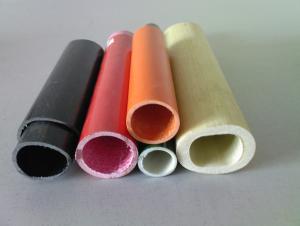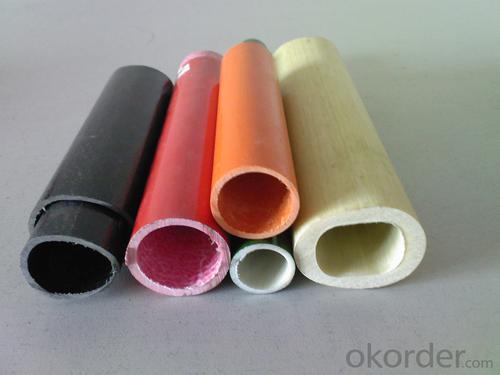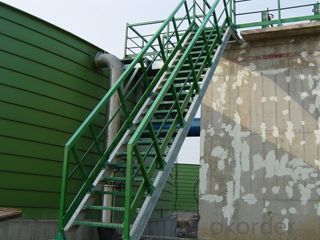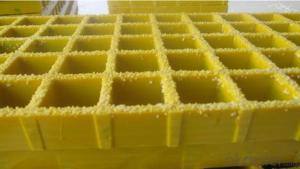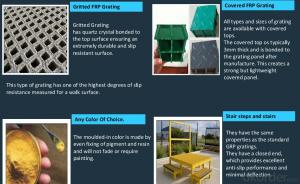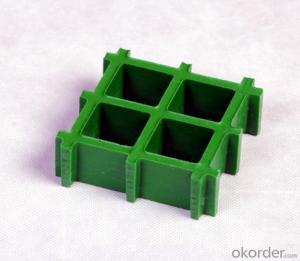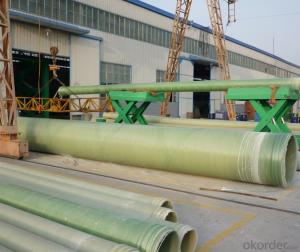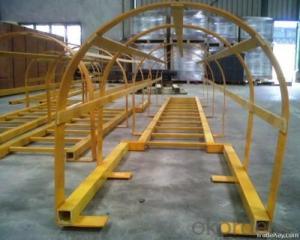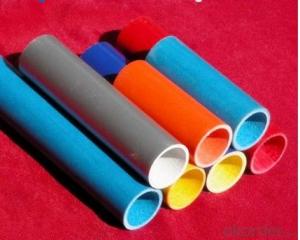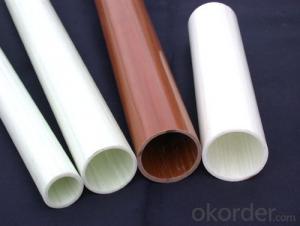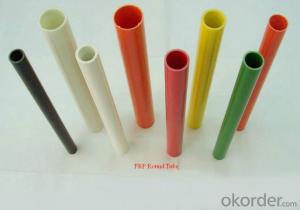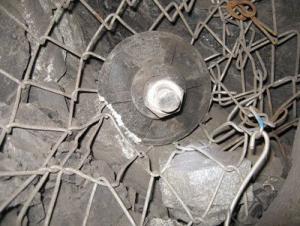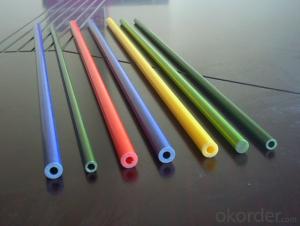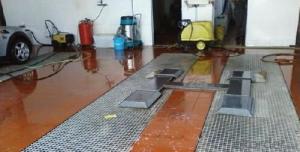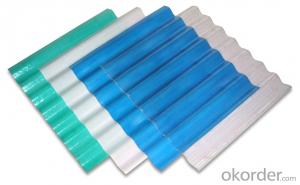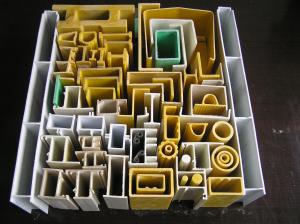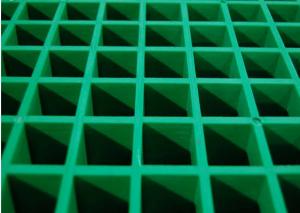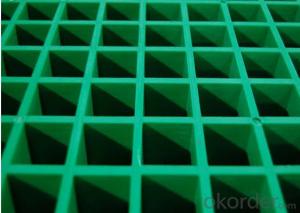FRP Pultrusion Profiles - Fiber Glass Reinforce Plastic Pultruded Handle
- Loading Port:
- Shanghai
- Payment Terms:
- TT or LC
- Min Order Qty:
- 1000 kg
- Supply Capability:
- 50000 kg/month
OKorder Service Pledge
OKorder Financial Service
You Might Also Like
General Description of FIBERGLASS HANDLE:
Fiberglass handle is manufactured byhigh-strength fiberglass as reinforcing material, thermosetting resin as the base, and then taken shape on a special pultruded mold, where the high temperature activates the resin to cure. 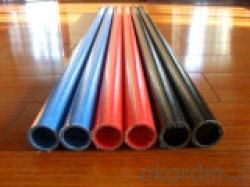
Main Features of Pultruded Handle:
1. light weight and high strength
2. anti-ageing
3. aesthetically pleasing appearance
4. environmental friendliness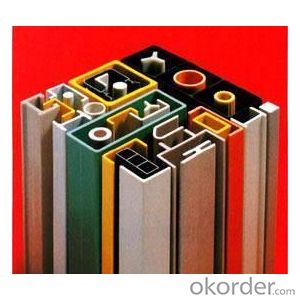
Main Application of Pultruded Handle:
farming tool: shovel, hoe, pickaxe, ax, hammer etc.
gardening tool: grass shears, tree pruner, fencing shears, grass harrow etc.
cleaning tool: mop, broom, window brush etc.
Main Specification of Pultruded Handle:
Normal size | φ32*φ26, φ32*φ27.5, φ32*φ28, φ32*φ22, φ31*φ25,φ30*φ26, φ30*φ24, φ28*φ24, φ28*φ22, φ25.4*φ20.5, φ25.4*φ18.4, φ24*φ20, φ22*φ18.4 |
Surface effect | nexus mat surface, continuous strand mat surface, stitched mat surface, painting surface, wood texture surface |
Regular Color | yellow, red, blue, green, white, gray |
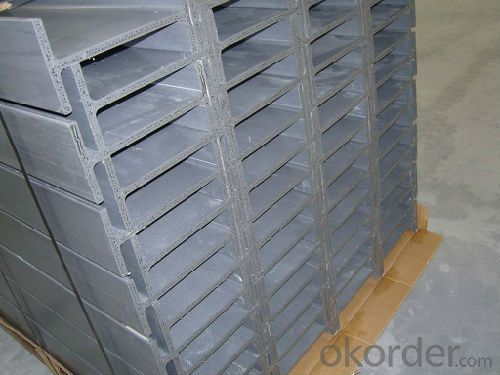
FAQ:
1, Why choose us?
We are stated owned company, more realiable, more safety;
We have international team which can provide professional and correct service as per buyer requirement;
We have fast response and good after-sale service, since we have lot of branch office all around world;
- Q: Can FRP pultrusion profiles be used in the construction of water treatment plants?
- Water treatment plants can utilize FRP (Fiber Reinforced Polymer) pultrusion profiles. These profiles possess several advantages that render them suitable for this purpose. To begin with, FRP pultrusion profiles exhibit resistance to corrosion. Water treatment plants encounter various corrosive substances, such as chemicals and moisture. Traditional materials like steel and concrete can degrade over time due to corrosion, resulting in maintenance complications and potential structural failures. Nevertheless, FRP pultrusion profiles possess a high resistance to corrosion, ensuring prolonged durability and reduced maintenance expenses. Furthermore, FRP pultrusion profiles are lightweight and possess high strength-to-weight ratios. This characteristic facilitates easy handling and transportation while maintaining structural integrity. Water treatment plants often necessitate structural components that can endure heavy loads and support equipment. FRP pultrusion profiles supply the required strength without adding excessive weight, making them an ideal choice for such applications. Additionally, FRP pultrusion profiles are non-conductive and possess exceptional electrical insulation properties. This attribute proves critical in water treatment plants where electrical apparatus and wiring are present. The non-conductive nature of FRP aids in preventing electrical hazards and guarantees safe operation. Moreover, FRP pultrusion profiles can be customized to fulfill specific design requirements. They can be manufactured in various shapes and sizes, allowing for design and construction flexibility. This adaptability renders FRP pultrusion profiles appropriate for a wide array of applications within water treatment plants, including structural supports, walkways, handrails, and equipment enclosures. In conclusion, FRP pultrusion profiles represent an exceptional option for the construction of water treatment plants due to their corrosion resistance, lightweight yet robust nature, electrical insulation properties, and customization possibilities. They provide long-lasting durability, reduced maintenance costs, and enhanced safety, thereby constituting a reliable and efficient solution for this critical infrastructure.
- Q: Are FRP pultrusion profiles resistant to fuels?
- Yes, FRP (Fiber Reinforced Polymer) pultrusion profiles are highly resistant to fuels. Due to their inherent corrosion resistance and non-reactive nature, FRP pultrusions can withstand exposure to a wide range of fuels, including gasoline, diesel, and aviation fuels, without deteriorating or losing their structural integrity. This makes them suitable for various applications in industries such as automotive, aerospace, and oil and gas, where resistance to fuel exposure is crucial.
- Q: Are FRP pultrusion profiles resistant to termites or other pests?
- Yes, FRP (Fiber Reinforced Polymer) pultrusion profiles are highly resistant to termites and other pests. The composition of FRP, which includes resin and glass fibers, makes it an inhospitable material for pests. Unlike wood, FRP does not provide a food source or favorable conditions for termites or other pests to thrive. Therefore, FRP pultrusion profiles are an excellent choice for applications where resistance to pests is required.
- Q: Can FRP pultrusion profiles be used in transportation infrastructure, such as bridges or platforms?
- Transportation infrastructure, including bridges and platforms, can effectively utilize FRP (Fiber Reinforced Polymer) pultrusion profiles. These profiles possess several advantageous properties that render them suitable for such applications. To begin with, FRP pultrusion profiles are renowned for their exceptional strength-to-weight ratio. This implies that they provide considerable structural strength while remaining lightweight. This quality is particularly valuable in transportation infrastructure, where weight reduction is crucial for enhancing energy efficiency and minimizing construction expenses. Moreover, FRP pultrusion profiles exhibit a high level of corrosion resistance. Unlike traditional construction materials like steel, FRP does not corrode when exposed to moisture or chemicals. This corrosion resistance makes FRP pultrusion profiles perfect for transportation infrastructure situated in harsh environmental conditions, such as bridges located in coastal areas or platforms susceptible to chemical spills. Additionally, FRP pultrusion profiles offer outstanding durability and longevity. They possess an extended service life and can withstand heavy loads, vibrations, and impacts. This ensures their suitability for high-traffic areas, guaranteeing that transportation infrastructure remains structurally sound and safe for an extended period. Lastly, FRP pultrusion profiles provide excellent design flexibility. They can be manufactured in various shapes and sizes, enabling customized solutions that meet the specific requirements of transportation infrastructure projects. They can be easily molded into intricate geometries, facilitating efficient construction and reducing the need for additional components. In conclusion, the properties of FRP pultrusion profiles make them highly suitable for utilization in transportation infrastructure, such as bridges or platforms. Their exceptional strength-to-weight ratio, corrosion resistance, durability, and design flexibility make them a reliable and cost-effective choice for constructing safe and efficient transportation systems.
- Q: Are FRP pultrusion profiles resistant to automotive fluids?
- FRP pultrusion profiles, commonly known as Fiber Reinforced Polymer profiles, possess a general resistance to automotive fluids. FRP, an abbreviation for Fiber Reinforced Polymer, is a composite material comprising a combination of fibers and a polymer matrix. The fibers utilized in FRP, such as fiberglass, carbon, or aramid, exhibit exceptional resistance to various automotive fluids, including oils, fuels, and coolants. The polymer matrix found in FRP profiles usually consists of a thermosetting resin, namely polyester, vinyl ester, or epoxy. These resins are renowned for their chemical resistance properties, which contribute to the high resistance of FRP pultrusion profiles towards a wide array of automotive fluids. They can endure exposure to different fluids without significant deterioration or loss of mechanical properties. It is important to acknowledge that the specific resistance of FRP pultrusion profiles to automotive fluids may differ based on the resin type and the composite material's precise composition. As a result, it is advisable to consult the manufacturer or supplier of the FRP profiles to verify their suitability for the intended application and the specific automotive fluids they may encounter.
- Q: Are FRP pultrusion profiles non-conductive?
- Yes, FRP pultrusion profiles are non-conductive.
- Q: Can FRP pultrusion profiles be used in the construction of chemical processing equipment?
- FRP pultrusion profiles have the capability to be utilized in the construction of chemical processing equipment. These profiles possess multiple advantages that render them suitable for such applications. To begin with, FRP pultrusion profiles exhibit a high resistance to corrosion, making them an ideal choice for chemical environments where exposure to corrosive substances is frequent. Unlike conventional materials like steel, FRP pultrusion profiles do not rust or corrode, resulting in an extended service life and reduced maintenance costs. Moreover, FRP pultrusion profiles are both lightweight and strong, providing exceptional structural integrity and load-bearing capacity. This is particularly crucial in chemical processing equipment, where the materials employed must endure high pressures and temperatures. The strength of FRP pultrusion profiles permits the construction of sturdy and durable equipment. Furthermore, FRP pultrusion profiles offer flexibility in design, allowing for customization of shapes and sizes to fulfill specific requirements. This permits the construction of intricate chemical processing equipment with complex designs that are not easily achievable using traditional materials. Additionally, FRP pultrusion profiles possess excellent electrical insulation properties, which can be advantageous in chemical processing equipment where minimizing electrical conductivity is necessary to prevent unwanted reactions or hazards. In conclusion, FRP pultrusion profiles are a dependable and cost-effective option for constructing chemical processing equipment. Their corrosion resistance, strength, design flexibility, and electrical insulation properties make them suitable for a wide range of applications in the chemical industry.
- Q: Can FRP pultrusion profiles be used in the construction of swimming pool enclosures?
- Swimming pool enclosures can make use of FRP pultrusion profiles, which are known for their excellent strength-to-weight ratio, corrosion resistance, and durability. This makes them an ideal choice for outdoor applications like swimming pool enclosures. To manufacture FRP pultrusion profiles, fiberglass rovings are pulled through a resin bath and then through a heated die. This results in a continuous profile of uniform shape and strength. This manufacturing process ensures that the profiles are strong, stiff, and lightweight, making them easy to handle and install. In the construction of swimming pool enclosures, FRP pultrusion profiles can be utilized for various structural elements such as beams, columns, trusses, and panels. These profiles provide the necessary strength and support, while also offering resistance to corrosion, moisture, and UV radiation, which are common challenges in a swimming pool environment. Furthermore, FRP pultrusion profiles can be customized to meet specific design requirements, allowing for flexibility in creating unique and aesthetically pleasing swimming pool enclosures. They can be fabricated in different shapes, sizes, and colors, enabling the desired architectural look and feel. Overall, FRP pultrusion profiles offer a reliable and long-lasting solution for constructing swimming pool enclosures. They provide the necessary strength, durability, and resistance to environmental factors. Additionally, their lightweight nature simplifies handling and installation, ultimately reducing construction time and costs.
- Q: What are the mechanical properties of FRP pultrusion profiles?
- FRP pultrusion profiles are highly valued in various industries due to their desirable mechanical properties. Some of the key properties include the following: 1. Exceptional Strength: FRP profiles have impressive tensile and flexural strength, making them suitable for load-bearing applications. The reinforcing fibers, like carbon, glass, or aramid, provide superior strength-to-weight ratios compared to materials like steel or aluminum. 2. Lightness: FRP profiles are significantly lighter than metals, leading to reduced costs for transportation and installation. Their low weight also makes them easier to handle and manipulate during construction or manufacturing processes. 3. Resistance to Corrosion: Unlike metals, FRP profiles are inherently resistant to corrosion. They do not rust or degrade when exposed to harsh environments, including moisture, chemicals, or UV radiation. This makes them ideal for marine, chemical, and infrastructure industries. 4. Dimensional Stability: FRP profiles maintain their shape and size even under extreme temperature variations. They have minimal rates of thermal expansion and contraction, ensuring long-term structural integrity. 5. Electrical Insulation: FRP profiles are non-conductive and possess excellent electrical insulation properties. This is crucial in applications where electrical conductivity must be avoided, such as near power lines or in electrical enclosures. 6. Versatile Design: FRP pultrusion profiles can be manufactured in various complex shapes and sizes, allowing for customized designs to meet specific requirements. They can be easily molded or formed during the manufacturing process, making them adaptable to diverse project needs. 7. Impact Resistance: FRP profiles have good impact resistance, absorbing and dispersing energy when subjected to mechanical loads. This ensures durability and structural integrity, making them suitable for construction, transportation, or sporting equipment. Overall, the mechanical properties of FRP pultrusion profiles make them an appealing alternative to traditional materials in a wide range of industries. They offer strength, durability, and corrosion resistance while being lightweight and easy to work with.
- Q: Can FRP pultrusion profiles be used in the construction of offshore platforms?
- Yes, FRP (Fiber Reinforced Polymer) pultrusion profiles can be used in the construction of offshore platforms. FRP pultrusion profiles have several advantageous properties that make them suitable for offshore applications. Firstly, FRP pultrusion profiles are lightweight yet strong, which is crucial for offshore platforms that need to withstand harsh environmental conditions such as strong winds, waves, and corrosive saltwater. The high strength-to-weight ratio of FRP makes it an ideal choice for reducing overall weight while maintaining structural integrity. Secondly, FRP is highly resistant to corrosion, unlike traditional construction materials such as steel. This is particularly important in the offshore environment, where saltwater exposure can lead to rapid corrosion of metal structures. FRP pultrusion profiles do not rust or corrode, resulting in longer service life and reduced maintenance costs. Furthermore, FRP pultrusion profiles can be designed and manufactured to have excellent fire resistance properties. This is crucial for offshore platforms, as fire incidents can have catastrophic consequences. FRP materials can be engineered to meet specific fire safety standards, providing an added layer of protection. Additionally, FRP pultrusion profiles offer design flexibility, as they can be easily customized to meet specific project requirements. This allows for the creation of complex shapes and sizes, enabling efficient construction and installation of offshore platforms. Overall, the lightweight, corrosion-resistant, fire-resistant, and customizable nature of FRP pultrusion profiles make them a suitable choice for the construction of offshore platforms. They offer numerous advantages over traditional materials, contributing to improved safety, durability, and cost-effectiveness in offshore construction projects.
Send your message to us
FRP Pultrusion Profiles - Fiber Glass Reinforce Plastic Pultruded Handle
- Loading Port:
- Shanghai
- Payment Terms:
- TT or LC
- Min Order Qty:
- 1000 kg
- Supply Capability:
- 50000 kg/month
OKorder Service Pledge
OKorder Financial Service
Similar products
Hot products
Hot Searches
Related keywords
